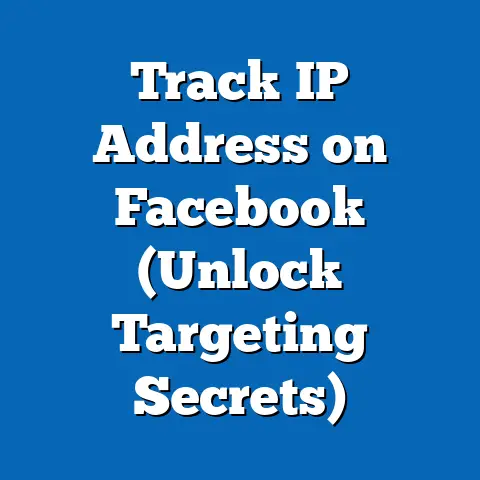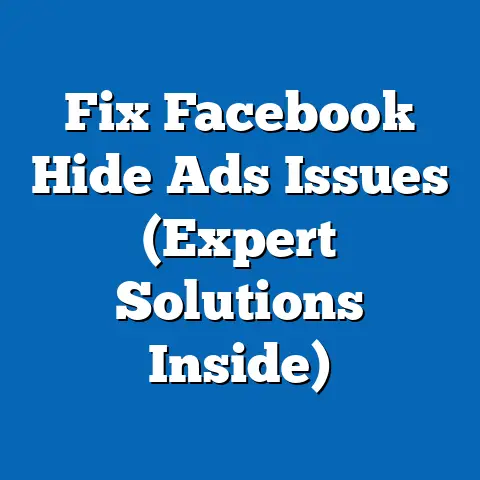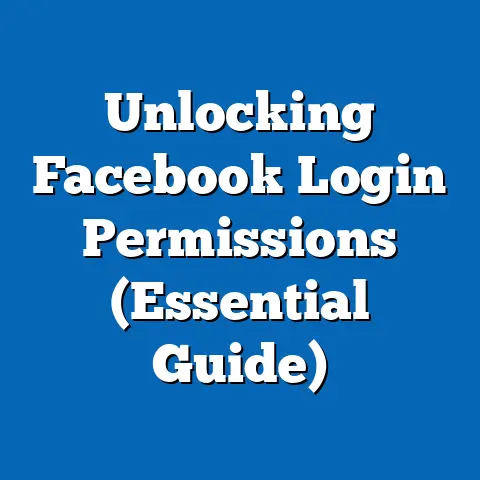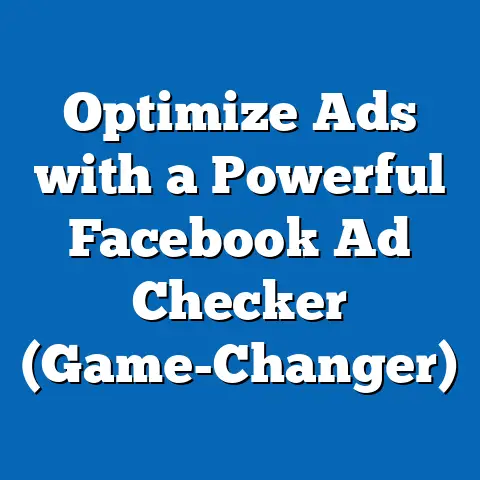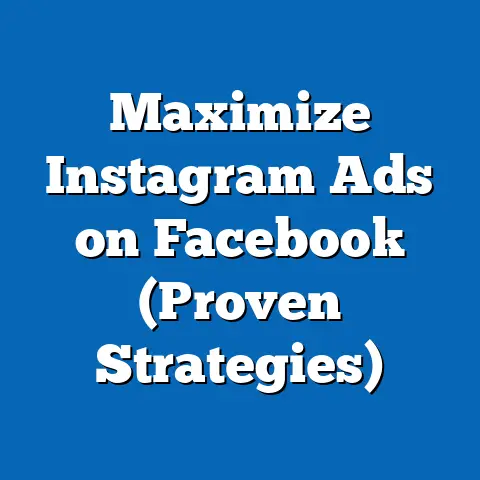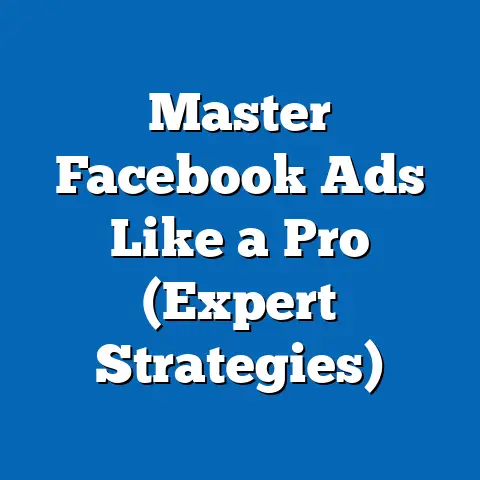Craft Irresistible Video Ads on Facebook (Expert Strategies)
In today’s digital landscape, it’s a constant battle for attention. As marketers and business owners, we’re all vying for those precious seconds of engagement amidst a sea of endless scrolling on social media. It’s like trying to yell above the roar of a stadium crowd – challenging, to say the least.
Facebook, with its billions of users, remains a powerful platform for reaching potential customers. But here’s the kicker: video content is king. Studies consistently show that video ads drive significantly higher engagement, brand awareness, and conversions compared to static images or text-based posts. In fact, according to recent statistics, videos get 1200% more shares than text and images combined.
However, simply throwing a video up on Facebook and hoping for the best rarely cuts it. I’ve seen firsthand how many businesses, despite recognizing the potential of video ads, struggle to create them effectively. They pour money into production, only to see their ads fall flat, resulting in wasted budgets and missed opportunities. It’s a frustrating experience, and one I’m determined to help you avoid.
Understanding Your Audience
Before you even think about picking up a camera or writing a script, you need to know who you’re talking to. Understanding your target audience is the cornerstone of any successful marketing campaign, and video ads are no exception. Think of it this way: you wouldn’t try to sell snow shovels in Miami, right? Similarly, you need to tailor your video content to the specific interests, needs, and pain points of your ideal customer.
Demographic insights are a great starting point. Age, gender, location, education level, and income can all provide valuable clues about your audience. But don’t stop there. Dig deeper into their preferences, behaviors, and online habits. What are their hobbies? What kind of content do they consume? What problems are they trying to solve?
For example, let’s say you’re selling organic dog treats. Through your research, you might discover that your target audience consists primarily of millennials and Gen Xers who are passionate about animal welfare and healthy living. They’re active on social media, participate in online communities, and are willing to spend more on premium products that align with their values. Knowing this, you can create video ads that highlight the natural ingredients, ethical sourcing, and health benefits of your dog treats, resonating with their values and ultimately driving sales.
Key Takeaway: Never underestimate the power of audience research. The more you know about your target audience, the better equipped you’ll be to create video ads that speak directly to their needs and interests.
Setting Clear Objectives
Once you have a solid understanding of your audience, it’s time to define your objectives. What do you want to achieve with your video ads? Are you trying to increase brand awareness, generate leads, drive sales, or something else entirely?
Setting clear goals is crucial because it dictates the style, tone, and content of your video ad. A video designed to increase brand awareness, for example, might focus on showcasing your company’s values and mission, while a video designed to drive sales might highlight the features and benefits of a specific product.
Here are some examples of specific, measurable objectives you can set for your video campaigns:
- Increase brand awareness: Reach 100,000 people within the target audience in one month.
- Generate leads: Collect 500 email addresses through a lead magnet featured in the video ad.
- Drive sales: Increase online sales of a specific product by 15% within two weeks.
- Increase website traffic: Drive 2,000 new visitors to the website from the video ad.
- Improve engagement: Achieve a 5% engagement rate (likes, comments, shares) on the video ad.
I once worked with a client who was launching a new line of eco-friendly cleaning products. Their initial objective was simply to “get the word out.” However, after some discussion, we refined their objective to be more specific: “Increase brand awareness among environmentally conscious consumers aged 25-45 in the United States, with a goal of reaching 50,000 people within the first month.” This clarity allowed us to create a video ad that was laser-focused on their target audience and their desired outcome.
Key Takeaway: Define clear, measurable objectives before you start creating your video ad. This will help you stay focused and ensure that your video is aligned with your overall marketing goals.
Crafting Compelling Storylines
Now for the fun part: creating a compelling storyline that grabs your audience’s attention and keeps them engaged. Storytelling is a powerful tool in video ads because it allows you to connect with viewers on an emotional level, making your message more memorable and impactful.
The structure of a compelling narrative typically includes:
- Hook: An attention-grabbing opening that immediately piques the viewer’s interest.
- Conflict: A problem or challenge that your target audience can relate to.
- Resolution: How your product or service solves the problem or overcomes the challenge.
- Call to action: A clear and concise instruction on what you want the viewer to do next.
The key is to incorporate your brand message seamlessly within the storyline without coming across as overly promotional. Think about how you can tell a story that resonates with your audience’s values, aspirations, and pain points.
For example, let’s say you’re selling a project management software. Instead of simply listing the features of your software, you could create a video that tells the story of a team struggling to manage their projects using outdated methods. The video could then show how your software helps them streamline their workflow, improve collaboration, and ultimately achieve their goals.
I remember working on a video ad for a local bakery. Instead of just showing off their delicious pastries, we created a short story about a young woman who was feeling stressed and overwhelmed with work. She then walks into the bakery, takes a bite of a freshly baked croissant, and suddenly feels a sense of calm and happiness. The video ended with a call to action inviting viewers to visit the bakery and experience the same feeling for themselves. The ad was incredibly effective because it tapped into the emotional needs of the target audience and positioned the bakery as a source of comfort and joy.
Key Takeaway: Don’t just sell your product or service – tell a story. Craft a compelling narrative that resonates with your audience’s emotions and values, making your video ad more memorable and impactful.
Technical Aspects of Video Creation
While a great storyline is essential, the technical aspects of video creation are equally important. If your video looks and sounds unprofessional, it will turn viewers off, no matter how compelling the story.
Here are some key technical elements to consider:
- High-quality visuals: Use a good camera and lighting to ensure your video is visually appealing.
- Clear sound: Invest in a decent microphone to capture clear audio.
- Professional editing: Use editing software to create a smooth and polished final product.
- Optimal video length: Keep your video concise and to the point. The ideal length for Facebook video ads is typically between 15 and 60 seconds.
- Captions and text overlays: Many users watch videos without sound, so it’s important to include captions and text overlays to convey your message.
Facebook also has specific technical requirements for video ads, such as:
- Video ratio: 1:1 (square) or 9:16 (vertical) are generally recommended.
- Video format: MP4 or MOV.
- Maximum file size: 4GB.
I’ve learned the hard way that cutting corners on the technical aspects of video creation can be a costly mistake. I once worked on a project where we tried to save money by using a low-quality camera and microphone. The resulting video looked and sounded terrible, and it ultimately failed to achieve its objectives. After that experience, I made it a point to always invest in high-quality equipment and professional editing.
Key Takeaway: Pay attention to the technical details of video creation. High-quality visuals, clear sound, and professional editing can make a big difference in the effectiveness of your video ad.
Utilizing Facebook Ad Features
Facebook offers a wide range of features that can help you optimize your video ads for maximum impact. These include:
- Targeting options: Target your video ads to specific demographics, interests, and behaviors.
- Ad placements: Choose where you want your video ads to appear on Facebook, such as the News Feed, Instagram Feed, or Audience Network.
- Call-to-action buttons: Add a call-to-action button to your video ad to encourage viewers to take a specific action, such as “Learn More,” “Shop Now,” or “Sign Up.”
- A/B testing: Test different versions of your video ad to see which performs best.
- Analytics: Track the performance of your video ads to see how they’re performing and identify areas for improvement.
Facebook’s Ad Manager is your central hub for creating, managing, and tracking your video ad campaigns. It allows you to set your budget, define your target audience, choose your ad placements, and track your results.
One of the most powerful features of Facebook Ad Manager is the ability to A/B test different versions of your video ad. For example, you could test different headlines, descriptions, or call-to-action buttons to see which generates the most clicks.
I once ran an A/B test on a video ad for a local restaurant. We tested two different headlines: “Try Our Delicious New Menu” and “Experience Authentic Italian Cuisine.” The second headline, “Experience Authentic Italian Cuisine,” generated significantly more clicks because it appealed to the target audience’s desire for authentic culinary experiences.
Key Takeaway: Leverage Facebook’s ad features to target your video ads to the right audience, optimize your ad placements, and track your results. A/B testing is a particularly powerful tool for improving the performance of your video ads.
Best Practices and Case Studies
To wrap things up, let’s take a look at some best practices and real-world examples of successful Facebook video ad campaigns.
Here are some general best practices for creating video ads:
- Keep it concise: Get to the point quickly and keep your video short and sweet.
- Focus on the first few seconds: The first few seconds of your video are crucial for capturing attention.
- Ensure the ad aligns with the brand identity: Your video ad should be consistent with your brand’s overall messaging and aesthetic.
- Use a clear call to action: Tell viewers exactly what you want them to do next.
- Optimize for mobile: Most Facebook users access the platform on their mobile devices, so make sure your video ad is optimized for mobile viewing.
Let’s also analyze what made these campaigns successful and what others can learn from them.
Case Study 1: Dollar Shave Club
Dollar Shave Club’s viral video ad is a classic example of how to create a memorable and engaging video on a small budget. The video features the company’s founder, Michael Dubin, delivering a humorous and irreverent pitch for their razor subscription service. The video was shot in a single take and cost only \$4,500 to produce, but it generated over 12,000 orders within 48 hours and helped the company become a household name.
The key to Dollar Shave Club’s success was their unique and memorable approach. They didn’t try to be like everyone else; they embraced their own quirky personality and created a video that was both entertaining and informative.
Case Study 2: Airbnb
Airbnb’s “Live There” campaign is a great example of how to use video ads to tell a story and connect with your audience on an emotional level. The campaign features a series of videos that showcase the unique experiences that travelers can have when they stay in Airbnb homes. The videos are beautifully shot and feature real people sharing their stories, making them feel authentic and relatable.
The key to Airbnb’s success was their focus on the emotional benefits of using their service. They didn’t just sell a place to stay; they sold the idea of experiencing a new culture and connecting with local people.
Key Takeaway: Learn from the successes of others. Study successful Facebook video ad campaigns and identify the strategies and tactics that made them work.
Conclusion
Creating irresistible video ads on Facebook is a combination of art and science. It requires a deep understanding of your audience, clear objectives, compelling storytelling, technical expertise, and a willingness to experiment and learn.
By following the strategies and tips outlined in this guide, you can create video ads that capture attention, resonate with your audience, and drive meaningful results. Remember, the key is to focus on providing value, telling a story, and connecting with viewers on an emotional level.
So, go forth and create amazing video ads that elevate your brand’s presence on Facebook and connect with audiences in meaningful ways. The potential is there – all you need is the right approach.

